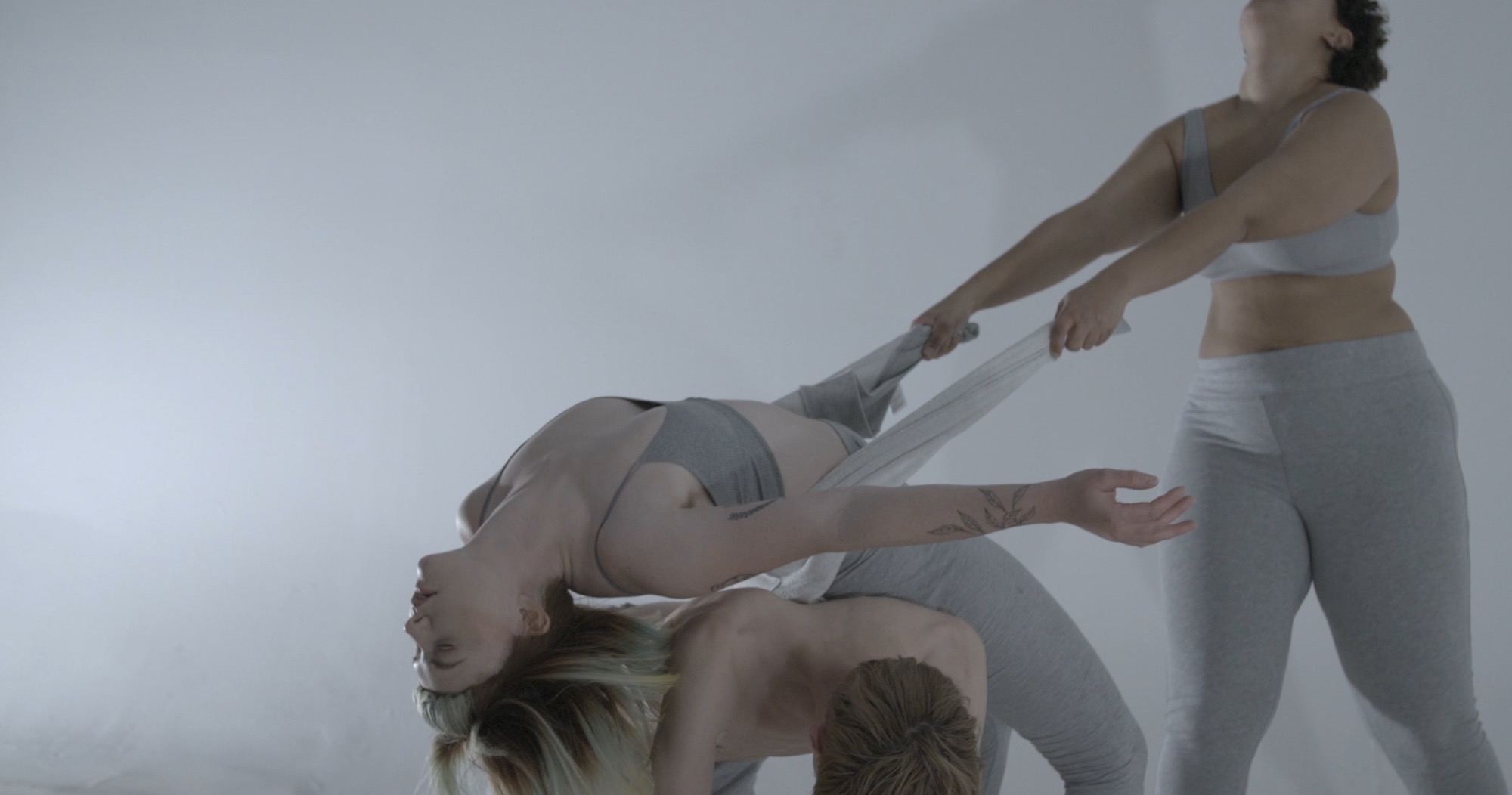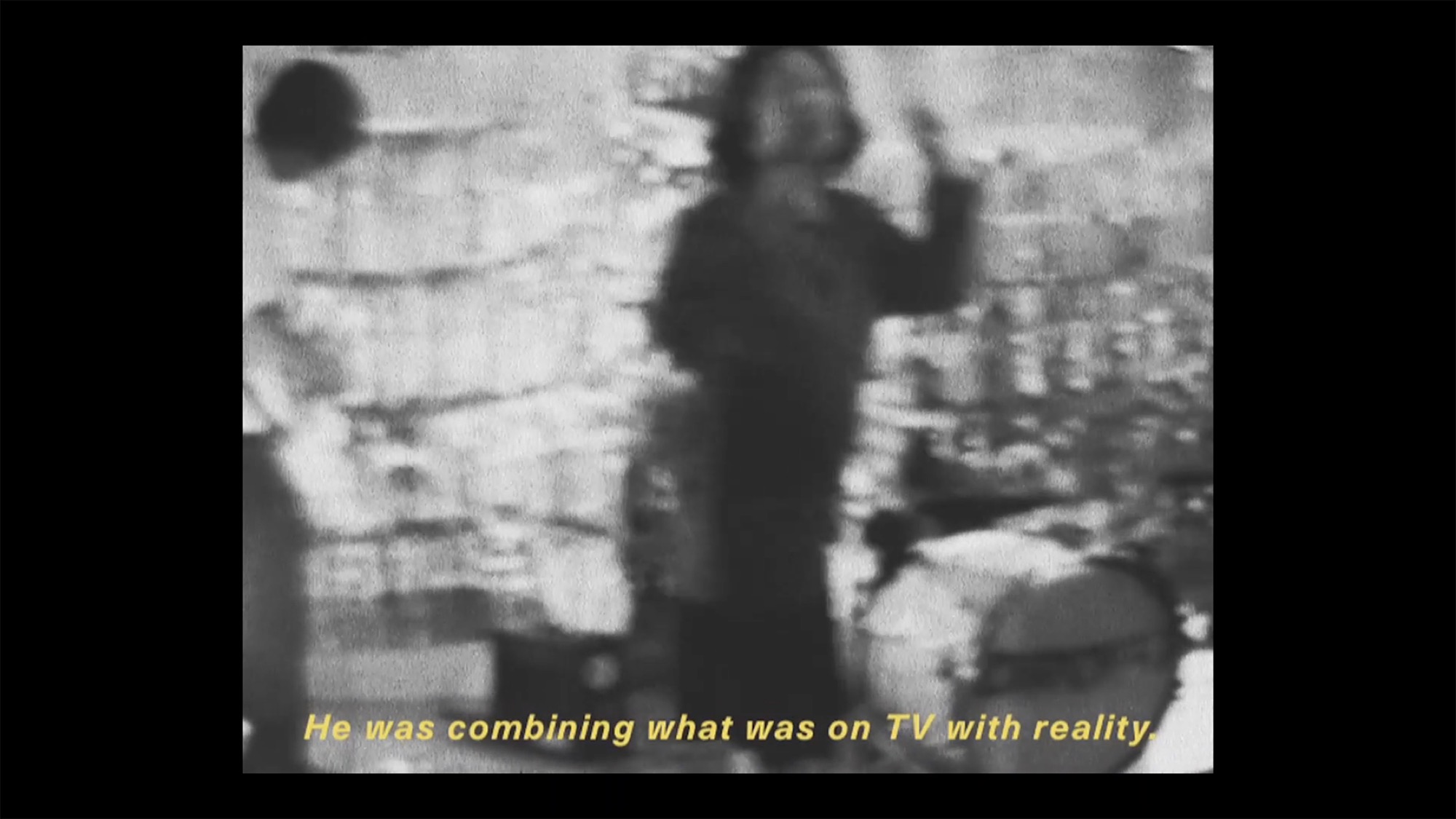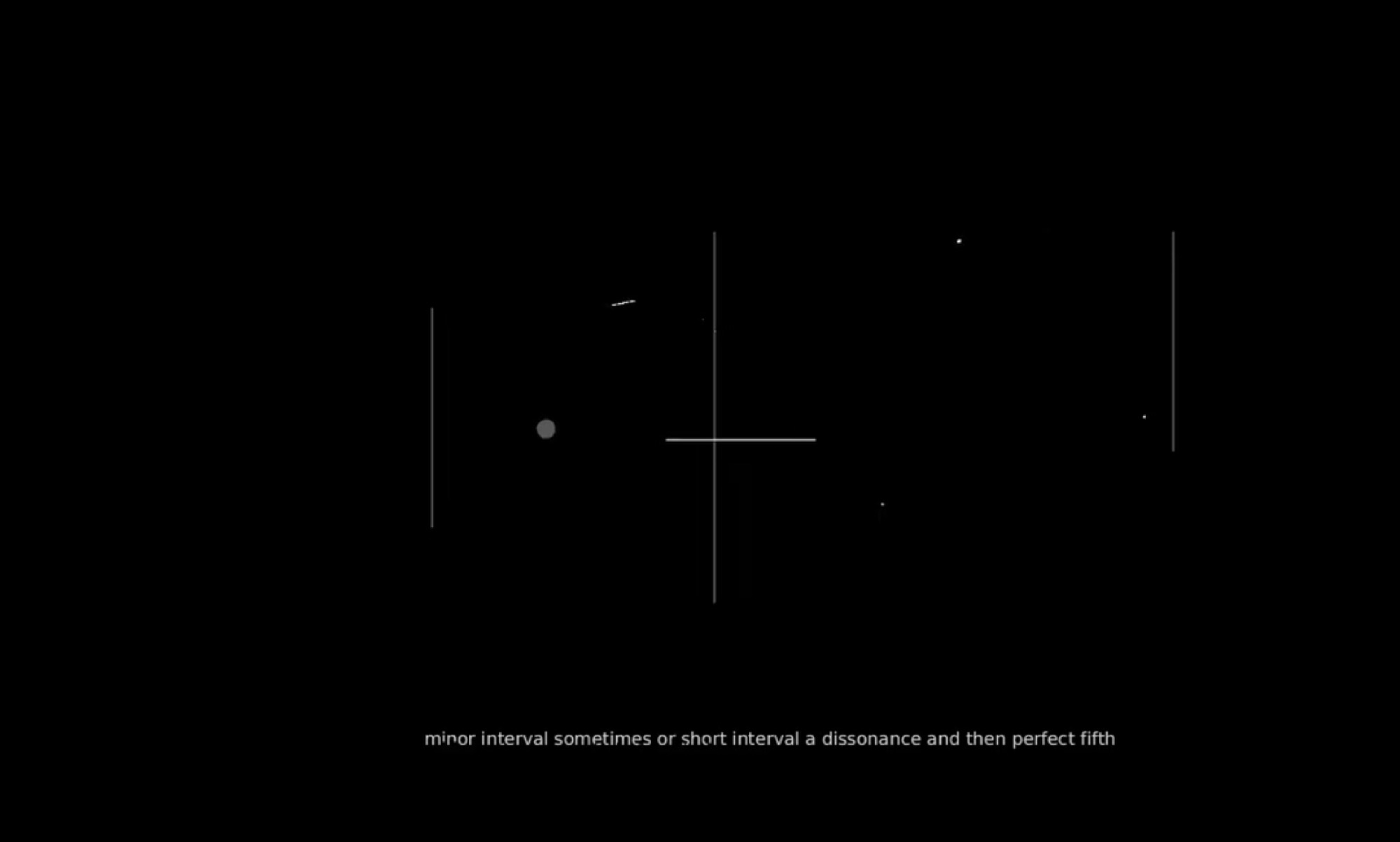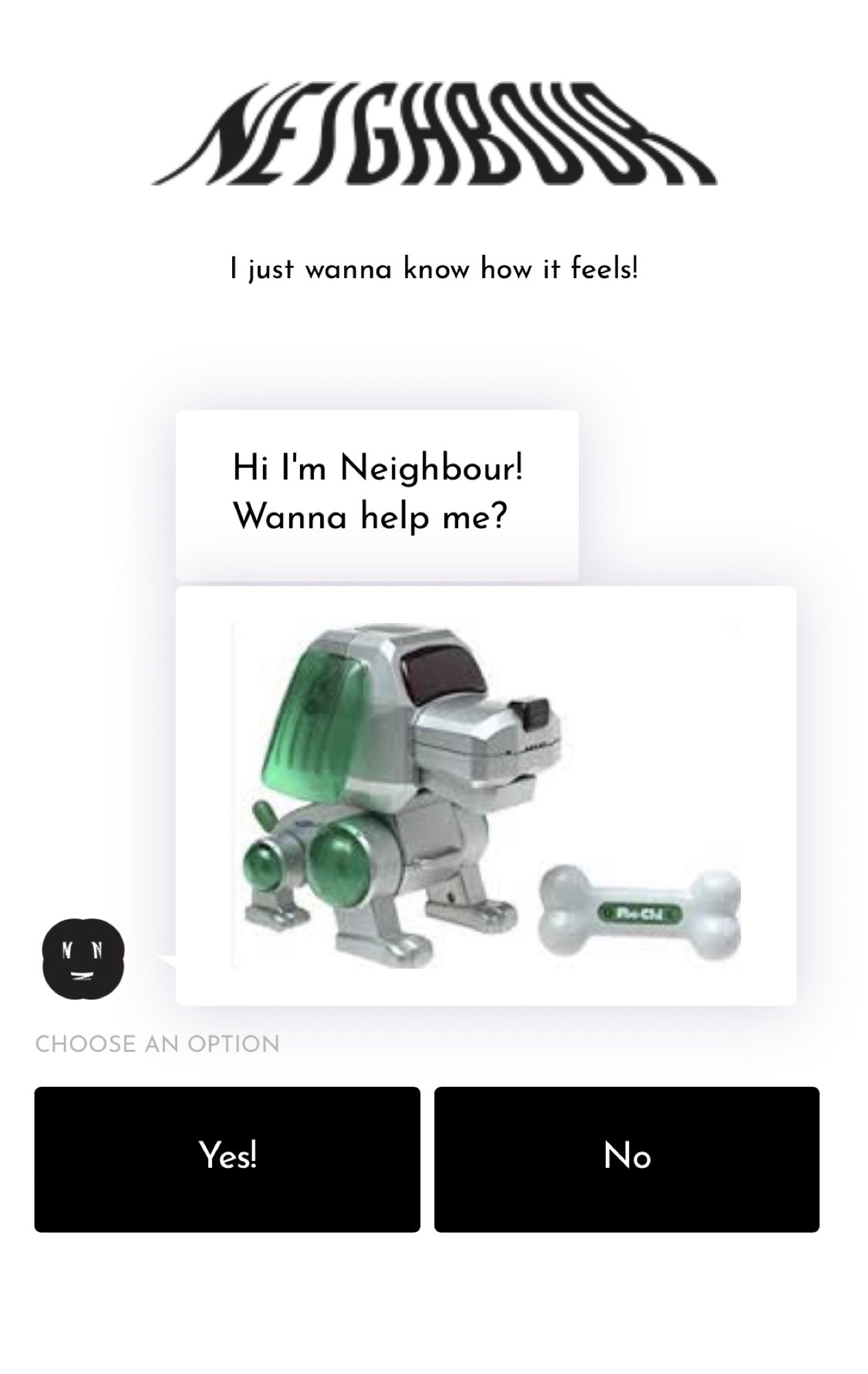A GOOD GRIP
Sarinah Masukor
I’m sitting in my living room watching Henry Wolff’s Ourselves (2020), a 6-minute moving image work currently hosted on the Bus Projects website. Three bodies—Jamille Juhale, Jasmine Crisp and the artist—move carefully against a white background, performing a set of loosely choreographed gestures of holding and support. The work is playing on my laptop that is propped on a pile of books stacked on an IKEA stool. The Vimeo player window is expanded but it’s still not big enough because beyond the grey frame of the screen I can see out across the balcony and into my neighbour’s kitchen. My neighbour is walking around wearing a red jumper.
I’m describing my domestic space because it has leaked into my experience of art since, along with much of the world, I began staying at home in March. Six months later, these viewing conditions have started to bother me. As galleries respond to disrupted exhibition schedules and COVID closures by commissioning work that can be exhibited online and experienced at home, there’s a wealth of new moving image work to watch. For galleries without the resources to support intensive coding and data or those without a previously established online gallery space for hosting internet-native work, this often takes the form of short videos that can be easily uploaded and made accessible via Vimeo. Commissioning is great—it provides artists with funds to maintain their practice and it keeps the space alive by filling the gap in programming—but I’ve noticed that work is sometimes posted without consideration for the way moving image is sculptural, or how work is often designed in relation to the architectural spaces of display—the white cube, the black box, the large scale public screen. In addition, when moving image work is exhibited in a gallery it is frequently in dialogue with the other works on show, and the siloed nature of watching at home changes the experience into something more fragmented and harder to pin down.

Ourselves feels like it speaks to the architectural conditions of the white cube. The work has kindred preoccupations to architecture—weight, volume and support—and the performance would translate easily to being performed live. The performers guide each other into position, protecting each other from collapse, accompanied by spoken lines that relate to ideas of trust, risk and connection. Holding hands, they lean back, drape over each other, come close, move away, push, pull and surrender. The performance was filmed in a cyclorama and the camera is smooth and slow, gliding around the figures, focused on points of contact, the tension between a stable support and one that threatens to give way. The camera is impersonal, a machine-eye rather than a participatory, physical presence and it turns the bodies into figures—combinations of line, space and volume moving in an infinite white expanse. Because there’s so much negative space around the bodies, Ourselves needs to be projected in a physical space to breathe. It doesn’t sit comfortably on the internet.

Sometimes a lo-fi approach feels more in tune with our current domestic condition. Over at BLINDSIDE, their Satellite program hosts an online series of moving image commissions responding directly to the pandemic in personal, domestic ways. In Sarah Rudledge’s Kicking the Bucket, she films herself kicking a plastic bucket across her backyard every day, breaking it, mending it and kicking it again. Jesse Boyd-Reid films his family returning to a place special to them, a lush, fast running creek in Northern NSW. Miko Revereza, Talia Smith, Leyla Stevens and Amrita Hepi have all contributed work about home for a reel curated by Josephine Mead, titled the place one lives.,. These works, by virtue of being rooted in the domestic, feel complete, even when watched at home.

ACCA’s response to the hiatus has been to commission new contemporary artworks designed specifically for the internet. Selected by a panel from an open call out, Archie Barry, Zanny Begg, Léuli Eshrāghi, Sean Peoples, as well as collaborators Madeline Flynn and Tim Humphrey and Amrita Hepi and Sam Lieblich were chosen as the participating artists and given $8000 to develop and create new work. At the time of writing this, How Much Time Do We Have by Flynn and Humphrey and Neighbour by Hepi and Lieblich are live. Both works play with online experiences of time, space and sociality and Flynn and Humphrey reference Melbourne’s lockdown specifically. How Much Time Do We Have is a holding pattern that moves in sync with the slow, repetitive languor of a life where activity has been reduced. The work is set to disappear when Melbourne’s lockdown restrictions are lifted making it existentially tied to this time and place.

Neighbour is a chatbot that asks, “how does it feel” and engages in circular conversations made up of gifs, memes and the kinds of phrases people use while online dating. Hepi and Lieblich have said that Neighbour reveals the way AI is “dumb”, and despite the bot’s chatty tone and forward opening, it interacts in a very bot way, sticking to its own track rather than responding to what you type into the chat box. I’ve had three conversations with Neighbour and each time the chat starts off enthusiastic, with a cascade of images, before trickling down to a banal series of comments like “what is?” and “you know what i mean”. In our second conversation, Neighbour demonstrated (and I don’t know whether this happened by design or accident) the same flaw that has befallen other internet trained chatbots—an inability to judge and filter information retrieved from the internet. When I tell Neighbour “it feels like a storm is coming”—a literal description of the weather outside—it sends me a Wikipedia image of far-right commentator Jordan Peterson. When I warn Neighbour that Peterson’s ideas are dangerous, it switches to flirty sex talk, giving me a gross feeling I don’t want to dwell on.

AI is pretty dumb, and it’ll stay dumb because, no matter how much information it is fed, what separates having lots of information from intelligence is the ability to make ethical decisions about that information. Neighbour’s penchant for political YouTube clips comments on how the internet shapes us when we aren’t intentionally shaping it. But Neighbour doesn’t imagine how AI might be built to offer kinder and more responsible interactions or participate in easing the divisions in society. And if, as the artists say, Neighbour is gathering data to be used in future performances, then what does the work say about the ethics of data mining and the thorny problem of user as product?
There are two more questions—too big to untangle here—that hang over my experience of watching moving image online. The first is about memory and the way it’s connected to physical, sensory conditions. During March and April, I watched an overload of artist films that were temporarily made available and just three months later, I mostly can’t remember what I watched or where I watched it. Yet I vividly remember watching Cecile B. Evans’ What the Heart Wants (2016) in a sweltering black box, installed with raised platform and flat floor cushions at Artspace two years ago. The second question is trickier to articulate, but it’s to do with archival practice, the way history is or isn’t written and who work belongs to after it has been institutionalised. I’ve been reading Ariella Aïsha Azoulay’s Potential History: Unlearning Imperialism and wondering if the internet keeps the work it stores in use accessible to the people who made it and the communities who appreciate it, or if online presentation strips the work of the context, community and place it springs from and belongs to.
In the past week, I’ve scrolled through the Firstdraft auction, spoke on an online exhibition panel (hosted in Wellington, participating from my couch in Sydney with other speakers in New York and New Orleans), watched a feature length multichannel video work that definitely needed a larger space and better audio than I have at home and registered for Frieze Art Fair’s virtual viewing room. None of these experiences have left me with the same aliveness I get from attending an exhibition and watching an artist’s film in a physical gallery setting. It isn’t just the weird feeling of social isolation you get when you start doing everything from home, it’s also that certain works, like Wolff’s, don’t speak as expressively from a laptop as they do when they attach themselves to the height of the room and reflect the shine of a gallery floor—the atmosphere of places where art is the main thing that matters and where the ritual of looking, feeling and thinking about art is renewed.

After our first chat, Neighbour sends me an email and it’s right about one thing—I’m no closer to getting a good grip on it:
Just so you remember
We worked out it is leg and a neighbour
And is like it’s clearer backwards, like crunchy, a pringle and a little smooch on the sly
And most importantly from my perspective because I’m a lil perv it feels dreamy and catastrophic !!!
But we’re no closer to getting a good grip on it are we
Maybe we’re all fucked anyway
Nah ur right m8
Xx neighby
Sarinah Masukor is a writer living on Wangal land. She holds a PhD in film from Monash University and has written extensively on artists’ moving image. She currently works as a TV screenwriter.


